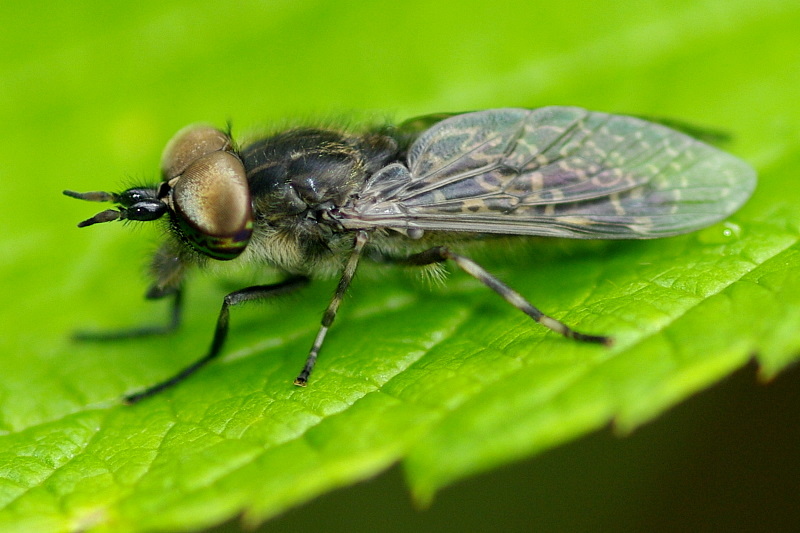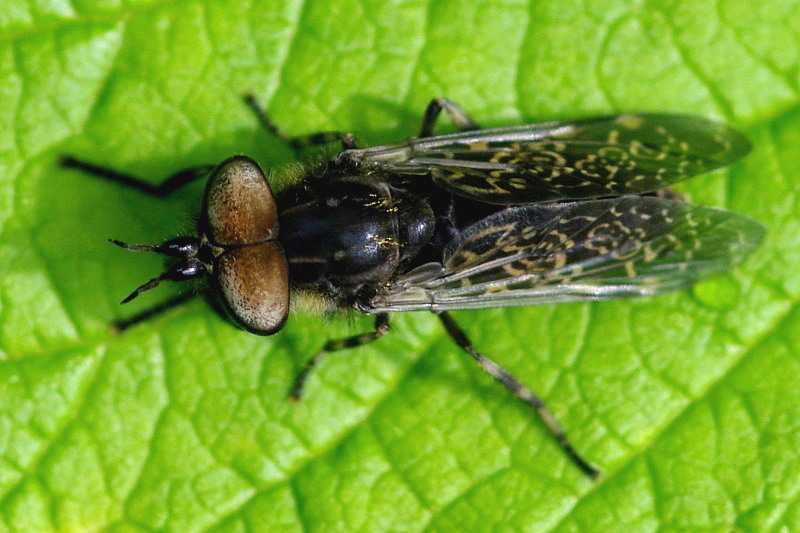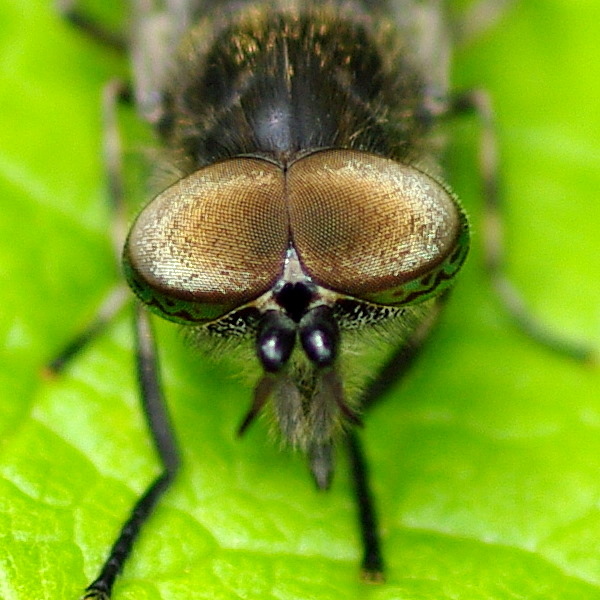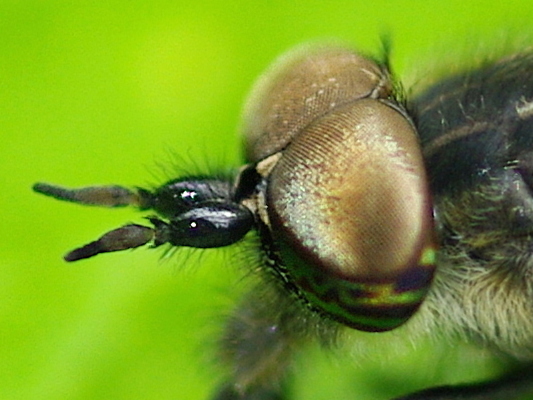Diptera.info :: Identification queries :: Diptera (adults)
Who is here? 1 guest(s)
|
=> Haematopota crassicornis
|
|
| Marion Friedrich |
Posted on 31-07-2012 18:00
|
|
Member Location: Saxony, Germany Posts: 1151 Joined: 07.10.09 |
Hello, is species ID possible? pluvialis? Thanks, Marion Pictures were taken in Germany, Saxony, 12th July 2009 Marion Friedrich attached the following image:  [130.53Kb] Edited by Marion Friedrich on 04-08-2012 20:35 |
| Marion Friedrich |
Posted on 31-07-2012 18:00
|
|
Member Location: Saxony, Germany Posts: 1151 Joined: 07.10.09 |
2nd picture
Marion Friedrich attached the following image:  [130.51Kb] |
| Marion Friedrich |
Posted on 31-07-2012 18:01
|
|
Member Location: Saxony, Germany Posts: 1151 Joined: 07.10.09 |
3rd picture
Marion Friedrich attached the following image:  [109.8Kb] |
| Sundew |
Posted on 31-07-2012 19:07
|
|
Member Location: Berlin and Baden-Württemberg, Germany Posts: 3911 Joined: 28.07.07 |
It is the male, so it might well be H. pluvialis. See also http://www.fotoco...y/28507846. |
|
|
|
| Mark-uk |
Posted on 01-08-2012 12:42
|
|
Member Location: UK - Hampshire Posts: 792 Joined: 01.02.10 |
I am not convinced this is pluvialis - I can't see that antennal notch, eyes don't look correct, and I have not seen one this dark before, Mark |
|
|
|
| Marion Friedrich |
Posted on 01-08-2012 15:20
|
|
Member Location: Saxony, Germany Posts: 1151 Joined: 07.10.09 |
Thank you. This is my first male Haematopota. Usually I meet only the female ones. According to Fauna Europaea the following 7 species should exist in Germany. Haematopota bigoti Gobert 1880 Haematopota crassicornis Wahlberg 1848 Haematopota grandis Meigen 1820 Haematopota italica Meigen 1804 Haematopota pluvialis (Linnaeus 1758) Haematopota scutellata (Olsufjev, Moucha & Chvala 1964) Haematopota subcylindrica Pandelle 1883 I did not expect so many species. Can some of them be excluded? Marion |
| Sundew |
Posted on 01-08-2012 18:09
|
|
Member Location: Berlin and Baden-Württemberg, Germany Posts: 3911 Joined: 28.07.07 |
The antennal notch is said to be typical only for females of H. pluvialis. However, as I am no Tabanid expert, I only can compile the knowledge from former threads as well as other websites. We can summarize: H. bigoti and H. grandis are coastal species (http://www.dipter...pid=105045), so not probably showing up in Saxony. H. subcylindrica has extensively dusted first antennal segments and light grey wings (http://72.44.83.9...;pid=11478). This does not well match here. H. crassicornis has entirely black antennae, males of H. pluvialis have an orange third antennal segment (http://www.nature...orned-cleg, http://www.nature...orned-cleg). However, that orange is not always conspicuous (http://www.dipter...pid=101194). H. scutellata is a typical mountain species and has a light spot at the scutellum (http://www.dipter...pid=146453). H. italica males are very whitish with pinkish femora (http://www.dipter...pid=101194). The very nice Tabanid photos on http://flickrhive...nteresting may serve for comparison. As there is some dusting on the lower third of the first antennal segment, H. pluvialis (and H. subcylindrica) are still under consideration. However, Theo Zeegers’ skill is needed to confirm that… Regards, Sundew |
|
|
|
| Marion Friedrich |
Posted on 01-08-2012 20:13
|
|
Member Location: Saxony, Germany Posts: 1151 Joined: 07.10.09 |
Thank you Sundew for the nice overview which allows to exclude most of the species. I attach an enlarged view of the antenna and will wait for Theo Zeegers´ confirmation. Best regards, Marion Marion Friedrich attached the following image:  [134.97Kb] |
| Zeegers |
Posted on 04-08-2012 18:42
|
|
Member Location: Soest, NL Posts: 18779 Joined: 21.07.04 |
The antenna is all black, the first segment dusted only on basal quarter and there is a buch of yellow hairs on vertex present: all pointing in one direction: Haematopota crassicornis Theo |
|
|
|
| Marion Friedrich |
Posted on 04-08-2012 20:39
|
|
Member Location: Saxony, Germany Posts: 1151 Joined: 07.10.09 |
Thank you for ID, Theo.  Regards, Marion |
| Jump to Forum: |















